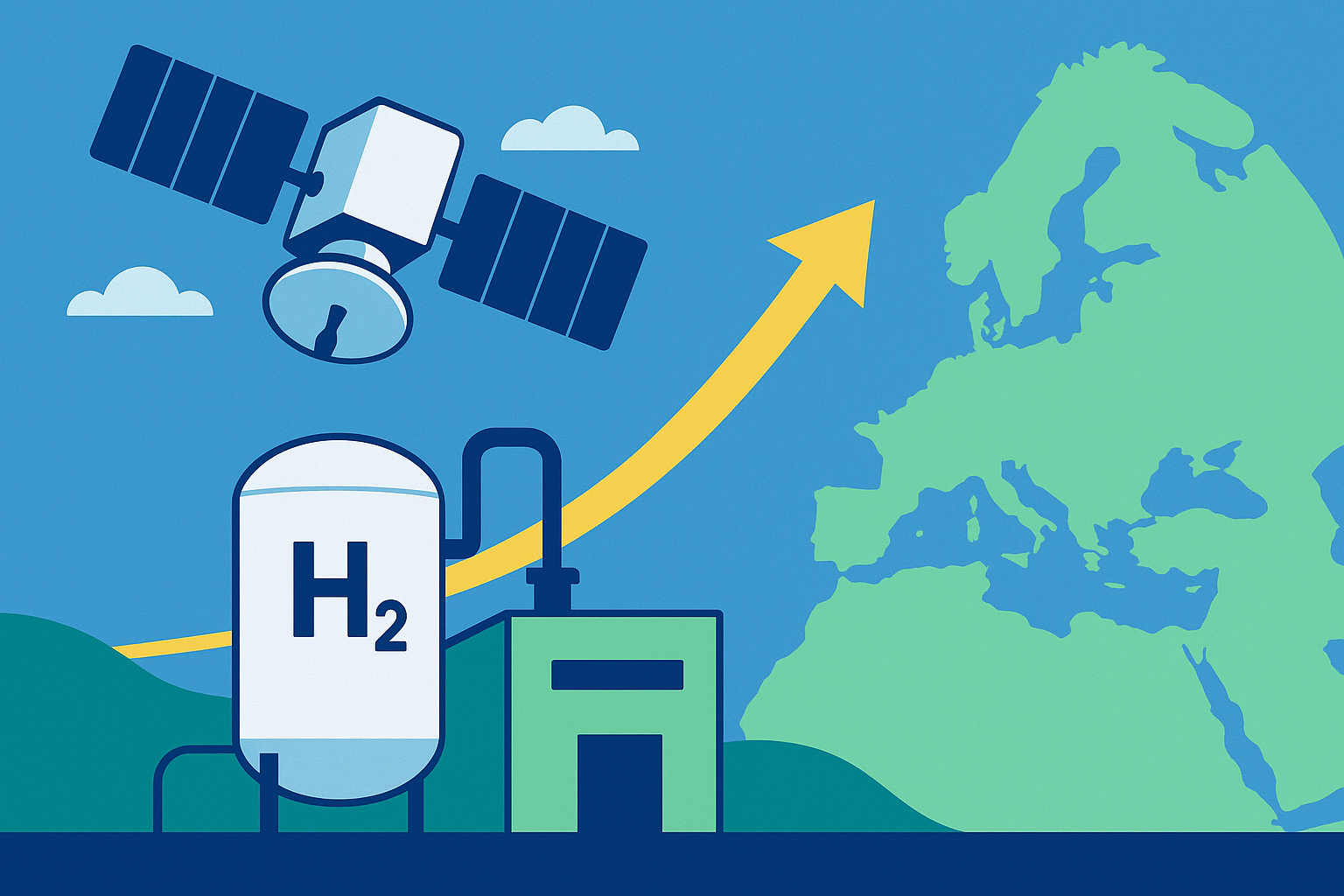Europe is accelerating its industrial transformation with bold moves in two frontier sectors: space manufacturing and clean hydrogen. From satellites being assembled on German soil to large-scale hydrogen infrastructure plans, the region is positioning itself as a hub for emerging industries that could reshape global supply chains and investment flows. For investors, these developments signal not only fresh opportunities but also early indicators of long-term structural shifts in industrial policy and capital allocation.
Europe’s Bet on New-Space Manufacturing
Satellite production, once concentrated in the U.S. and select Asian markets, is now firmly landing in Europe. Planet, a leading U.S. Earth-imaging satellite company, recently announced the expansion of its production capacity in Germany, according to GTAI (Germany Trade & Invest). This move underscores Europe’s ambition to localize critical technologies and reduce dependency on external suppliers.
Germany’s strategic appeal lies in its established aerospace ecosystem, skilled labor, and government support for high-tech industries. By anchoring satellite assembly in Europe, Planet can tap into the EU’s growing demand for space-based services — from climate monitoring to defense intelligence. With the European Space Agency (ESA) allocating more than €7.1 billion in its most recent budget cycle for Earth observation and telecommunications, suppliers in the space hardware chain are poised to benefit.
For investors, this shift presents a twofold story:
- Upstream opportunity in companies supplying components for satellite buses, sensors, and propulsion systems.
- Downstream potential in firms leveraging satellite data for applications in agriculture, logistics, and insurance.
Hydrogen’s Role in Europe’s Green Industrial Push
Parallel to its space ambitions, Europe is also doubling down on hydrogen as a cornerstone of its decarbonization strategy. The International Energy Agency (IEA) recently highlighted the fast growth potential for low-emissions hydrogen projects, particularly in Europe where regulatory frameworks and subsidies are aligning with ambitious climate targets.
Hydrogen is expected to play a pivotal role in hard-to-abate sectors such as steelmaking, chemicals, and heavy transport. The EU’s Fit for 55 package and national hydrogen strategies in Germany, France, and Spain are channeling billions into electrolyzer capacity and infrastructure buildout. According to IEA data, Europe could see over 40 gigawatts of electrolyzer capacity operational by 2030, positioning it as the global leader in green hydrogen deployment.
The opportunity is not without risks. Costs remain elevated, and project financing depends heavily on subsidies and long-term offtake agreements. However, as carbon pricing tightens and industrial buyers seek alternatives, demand visibility is strengthening.
Why This Matters for Investors
Both new-space and hydrogen reflect a broader reindustrialization of Europe that prioritizes sovereignty in strategic sectors. These industries are drawing government support, private capital, and cross-border collaborations. For investors, the common threads are:
- Capex cycles are beginning now: Satellite production lines and electrolyzer factories require significant upfront investment. This benefits industrial suppliers, engineering, procurement, and construction (EPC) firms, as well as specialized component manufacturers.
- Long-term supply chains are forming: Early entrants can lock in competitive advantages. This is especially relevant for hydrogen infrastructure players who secure prime offtake contracts.
- Policy-driven tailwinds: Unlike consumer tech cycles, these sectors are backed by government commitments that offer a degree of demand certainty — though execution and subsidy risks remain.
Future Trends to Watch
- Satellite-as-a-Service models: More companies may offer satellite data subscriptions, creating SaaS-like revenue streams tied to orbital assets.
- Hydrogen trading hubs: Europe is developing plans for cross-border hydrogen pipelines, potentially leading to liquid trading markets by the early 2030s.
- Industrial consolidation: Expect M&A as incumbents seek to integrate vertically in both space hardware and hydrogen supply chains.
Key Investment Insight
Investors should look beyond pure-play startups, which often face funding volatility, and instead focus on diversified industrial and defense contractors, EPC firms, and exchange-traded funds (ETFs) that offer broad exposure to space and clean hydrogen. Suppliers of electrolyzers, advanced materials, and satellite subsystems also represent attractive but higher-risk opportunities.
Positioning early in Europe’s industrial buildout allows investors to benefit from both near-term capital expenditure cycles and the longer-term structural transformation of two industries set to define the coming decades.
MoneyNews.Today will continue to track Europe’s evolving industrial landscape, bringing investors timely insights into the companies, policies, and technologies reshaping global markets.





